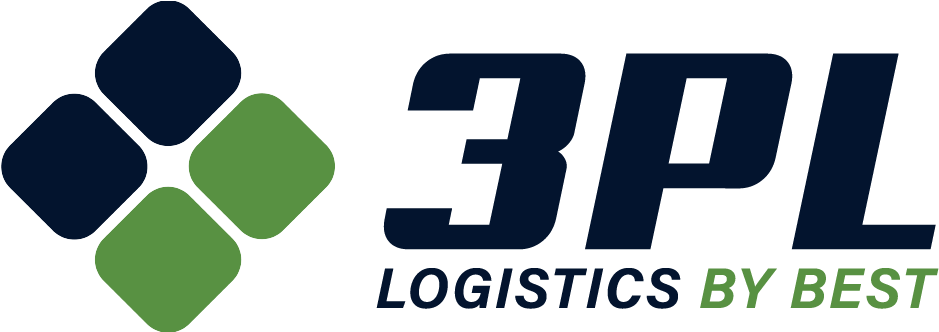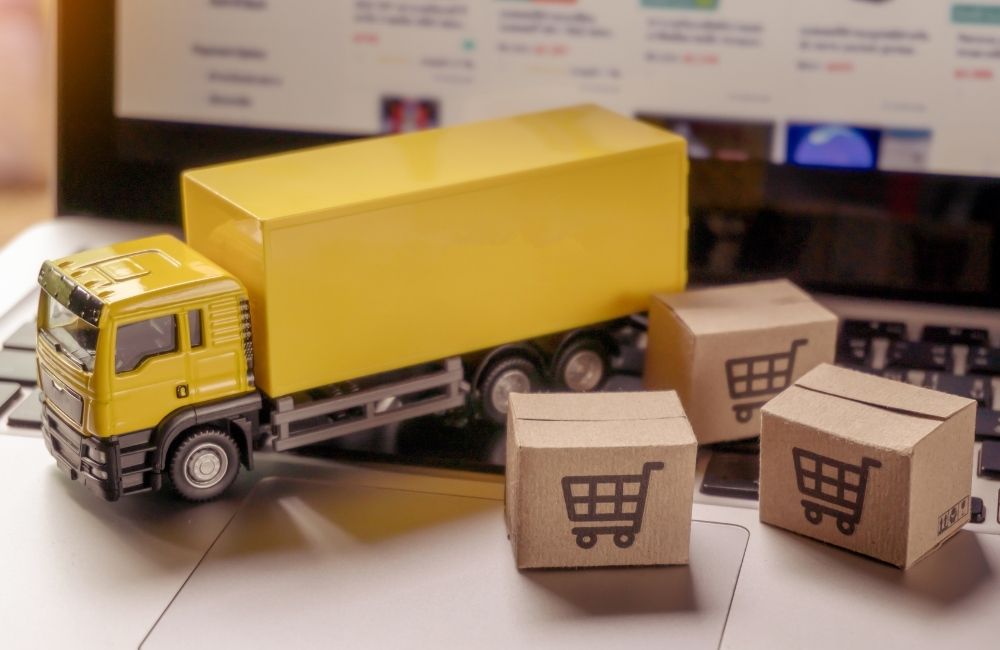The rise of e-commerce has created a fast-paced retail environment where consumers expect rapid delivery, seamless service, and consistent product availability. As online stores grow, so do their logistical demands, with retail and e-commerce sectors fueling the growth of the 3PL market.
This is where 3PL solutions come in. A reliable 3PL provider allows e-commerce businesses to offload complex logistics and focus on their core mission.
By leveraging logistics outsourcing, online sellers can improve operational efficiency and scalability.
Table of Contents
Key Takeaways
✔ Top 3PL providers enhance speed and precision through automation, real-time inventory updates, and efficient order routing.
✔ 3PL solutions allow businesses to scale up or down quickly with flexible space, labor, and infrastructure during demand surges.
✔ Shared resources, variable pricing models, and reduced labor expenses make 3PL partnerships a cost-effective alternative to in-house logistics.
✔ Businesses benefit from powerful warehouse management systems, expert compliance knowledge, and ongoing tech upgrades without internal development.
✔ By outsourcing logistics, brands can shift focus to innovation, marketing, and expansion without getting bogged down in operational tasks.
1. Optimize Fulfillment Speed and Accuracy
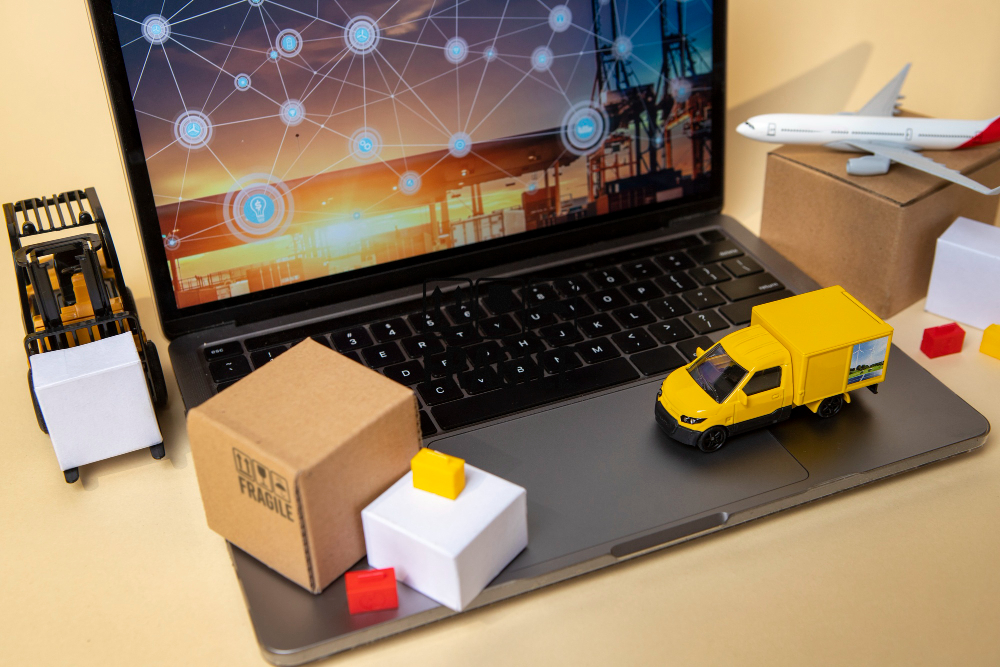
Fast and accurate order fulfillment is the backbone of a successful e-commerce operation. Delays, errors, and poor tracking can erode customer trust and damage brand reputation. With the support of the best 3PL solutions, e-commerce businesses can deliver consistent, high-performing fulfillment experiences at scale.
Here’s how the right 3PL provider enhances speed and accuracy:
- Real-Time Inventory Synchronization: Advanced warehouse management systems keep inventory levels updated across multiple platforms simultaneously. This minimizes overselling, backorders, and stockouts.
- Automated Picking and Packing Workflows: Automation tools such as robotic pickers, conveyor systems, and barcode scanners streamline fulfillment services. These systems reduce human error and ensure the correct items are packed every time.
- Zone-Based Fulfillment Strategies: By storing products in regional warehouses, 3PL providers shorten the last-mile delivery window. Customers receive packages faster, and shipping costs are lowered.
- Integrated Order Routing Logic: Orders are automatically routed to the most efficient fulfillment center based on location, stock availability, and service level requirements.
- Performance Monitoring and KPIs: Top 3PL providers use key performance indicators like order accuracy rate, on-time shipping, and return rate to continuously refine processes.
In a 2022 study, 73% of shippers and 95% of 3PL providers agreed that partnering with 3PLs led to improved service for the shippers’ customers. With the support of 3PL solutions, even smaller brands can match or exceed the logistics performance of major e-commerce players through expert logistics outsourcing. Benefits to the business include:
- Faster delivery times without needing internal logistics infrastructure
- Fewer returns due to reduced mis-picks and incorrect shipments
- Improved customer satisfaction, leading to stronger reviews and repeat purchases
- Greater ability to meet the demands of platforms like Amazon or Walmart Marketplace that require high fulfillment standards
2. Scale Your Operations Efficiently
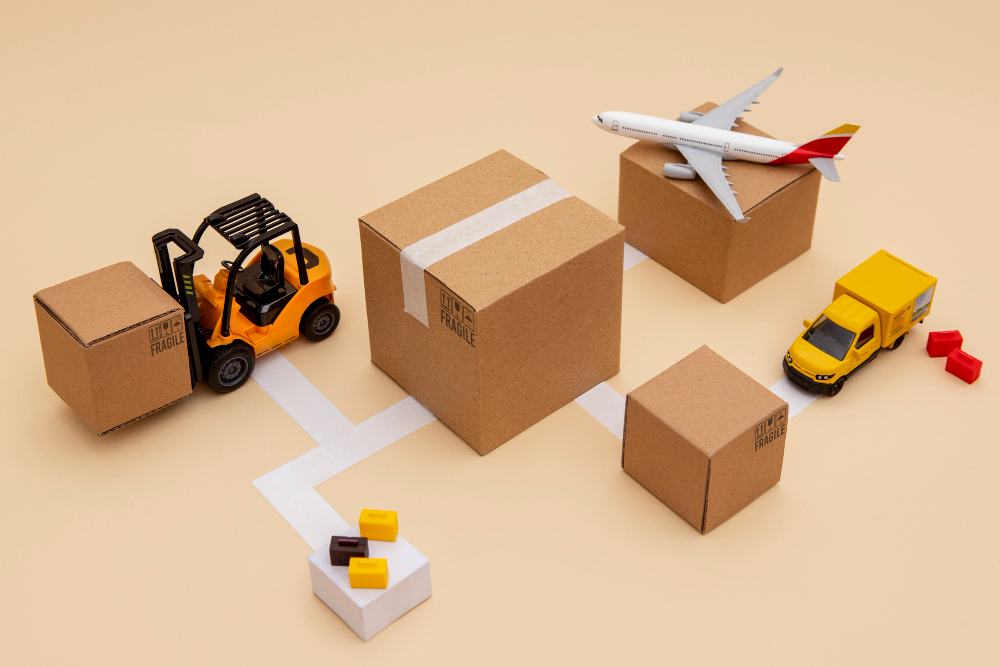
Growth in e-commerce isn’t linear—it often comes in bursts, making flexibility a top priority. Whether it’s a seasonal spike or an unexpected surge in sales, 3PL solutions offer the adaptability needed to expand without delays or service breakdowns.
Here are reasons why 3PL providers are built for scalable fulfillment:
- On-Demand Storage and Labor: Businesses can access extra warehouse space and staff during high-demand periods without long-term commitments.
- National and Global Distribution Networks: A leading 3PL provider typically operates multiple fulfillment centers across different regions or countries, enabling fast and scalable order delivery.
- Seamless Integration with Sales Channels: Logistics outsourcing partners provide tools that connect with Shopify, WooCommerce, Amazon, and other platforms, allowing for quick onboarding and rapid volume scaling.
- Load Balancing Technology: Orders are automatically balanced between locations and resources to prevent bottlenecks and avoid delays during peak sales periods.
- Pre-Configured Workflows for Seasonal Events: Many 3PLs have prebuilt templates for managing seasonal campaigns, flash sales, or promotional spikes, reducing prep time and ensuring smooth execution.
With the flexibility built into warehouse management and fulfillment services, businesses can grow confidently, knowing their logistics infrastructure will not be the bottleneck. Advantages of scalable 3PL solutions include:
- Reduced dependency on fixed physical space and staffing
- Faster response to marketing-driven surges in demand
- Ability to test new markets or products without infrastructure investment
- Lower risk of customer dissatisfaction due to stockouts or fulfillment delays
3. Reduce Operational Costs

Minimizing operational expenses is one of the most compelling reasons e-commerce companies choose logistics outsourcing. Managing logistics in-house can lead to excessive fixed costs, unexpected overhead, and inefficiencies. By partnering with a professional 3PL provider, businesses unlock a cost-effective, performance-driven alternative.
Key cost-saving advantages of 3PL solutions include:
- Shared Infrastructure and Resources: A 3PL provider distributes the cost of warehouse management, labor, equipment, and technology across multiple clients. This shared model eliminates the need for businesses to build their own facilities.
- No Long-Term Capital Commitments: Companies avoid expenses like property leases, forklift purchases, and IT system development. Instead, 3PL solutions provide access to scalable infrastructure without upfront investment.
- Pay-As-You-Go Pricing Models: Most fulfillment services are billed per order, per pallet stored, or per square foot used. This variable pricing allows companies to align logistics costs with sales performance—ideal for businesses with fluctuating order volumes.
- Lower Labor Costs: Hiring, training, and managing warehouse staff can be expensive and time-consuming. With a 3PL provider, all labor management is handled externally, reducing administrative burden and payroll expenses.
- Volume-Based Shipping Discounts: Due to their bulk shipping relationships, 3PL providers can negotiate lower rates with carriers. These high-volume discounts are passed on to clients, lowering last-mile delivery costs.
- Reduced Error-Related Expenses: Efficient fulfillment services result in fewer packing mistakes, returns, and reshipments—each of which contributes to profit loss when managed internally.
- Optimized Inventory and Space Utilization: Advanced warehouse management systems used by top 3PL solutions ensure smart slotting, faster inventory turnover, and reduced deadstock, minimizing carrying costs.
- Minimal Downtime and Risk Mitigation: Equipment breakdowns, employee absences, and warehouse disruptions can lead to costly delays. 3PL providers build in redundancy and contingency plans to ensure continuity.
For small businesses and fast-growing startups, especially, outsourcing fulfillment through cost-effective 3PL solutions is a practical path to sustainable expansion without overspending. Strategic cost advantages for e-commerce brands include:
- Better cash flow from predictable and scalable logistics expenses
- Opportunity to reinvest savings into growth areas like marketing or product development
- Less risk of financial strain during slow seasons or market shifts
4. Gain Access to Logistics Expertise and Technology
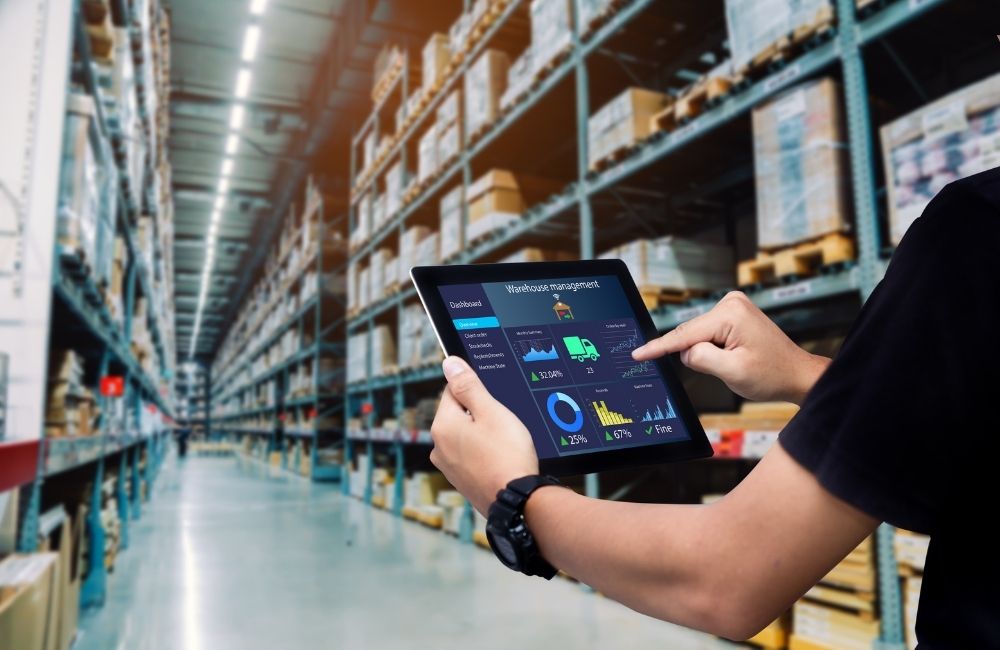
Outsourcing logistics is not just about offloading tasks—it’s about tapping into specialized knowledge and infrastructure built for excellence. The best 3PL providers combine years of operational experience with powerful technology to offer unmatched logistical performance.
Here’s how 3PL solutions empower e-commerce businesses with advanced capabilities:
- Real-Time Visibility Through Technology: Leading warehouse management platforms provided by 3PL providers offer real-time dashboards that track inventory, shipments, and order statuses. This transparency reduces uncertainty and improves forecasting accuracy.
- Seamless Integration with Sales Channels: Top 3PL solutions connect directly with platforms like Shopify, Amazon, WooCommerce, and BigCommerce. This ensures that order data flows smoothly without manual uploads or sync delays.
- Data-Driven Insights and Analytics: Fulfillment services often include performance reporting on metrics like order cycle time, shipping cost per unit, return rates, and stock turnover. These insights help brands optimize logistics decisions and reduce inefficiencies.
- Regulatory and Compliance Expertise: A seasoned 3PL provider understands customs documentation, restricted item handling, and local carrier requirements. This knowledge is especially crucial for international shipments, where mistakes can lead to delays or fines.
- Customized Shipping Strategies: Logistics experts develop tailored solutions for specific product types, such as fragile goods, oversized packages, or items requiring temperature control, ensuring safe and timely delivery.
- Carrier Network Optimization: Through partnerships with multiple carriers, 3PL providers identify the best shipping routes and services for each order. This dynamic approach balances speed and cost for each shipment.
- Continuous Innovation and Upgrades: Rather than invest heavily in new technologies, brands benefit from the 3PL’s ongoing improvements. From robotics and conveyor automation to AI-driven forecasting, these providers stay ahead of the curve.
- Experienced Operational Teams: Behind every fulfillment process is a team of logistics professionals. Their expertise in load balancing, dock scheduling, returns management, and exception handling ensures smooth daily operations.
By choosing to engage 3PL solutions, businesses gain a strategic advantage—advanced warehouse management systems and expert oversight, all without the cost and effort of internal development. Key business outcomes include:
- Lower risk of compliance issues or shipping delays
- More informed inventory and shipping strategies
- Access to enterprise-grade logistics without building in-house systems
- Enhanced customer satisfaction through better tracking and delivery accuracy
5. Focus on Core Business Growth
![]()
One of the most strategic advantages of 3PL solutions is the freedom they provide. When a 3PL provider takes over logistics, internal teams can shift from operational problem-solving to business expansion and customer experience.
Here’s how logistics outsourcing helps unlock growth potential:
- Redirect Team Resources Toward Strategic Work: Employees no longer need to manage warehouse schedules, shipping delays, or supplier coordination. This allows more time for building marketing campaigns, strengthening partnerships, and enhancing product development.
- Accelerate Go-to-Market Timelines: With fulfillment services running efficiently, businesses can bring new products to market faster. Inventory is received, stored, and shipped with minimal delay, supporting agile launch strategies.
- Enable Geographic and Channel Expansion: A capable 3PL provider supports multi-warehouse fulfillment, international shipping, and omnichannel retail. Brands can sell on new marketplaces or expand to new regions without additional logistics investment.
- Boost Brand Differentiation: Freed from day-to-day logistics tasks, business leaders can focus on elevating their brand identity, enhancing UX, or investing in customer service—all of which build long-term loyalty.
- Streamline Cross-Department Collaboration: With warehouse management and shipping handled externally, internal departments (marketing, product, finance) can work more cohesively without being pulled into logistics firefighting.
- Test New Business Models: Whether experimenting with subscription boxes, flash sales, or international fulfillment, businesses can pilot new models quickly and with less risk when logistics are managed by experts.
- Improve Financial Focus: Time and money saved on operations can be redirected to strategic investments, such as SEO, influencer partnerships, or supply chain diversification, to increase long-term revenue.
3PL solutions do more than streamline shipping—they remove a major operational burden, giving leadership the freedom to focus on growth and profitability. Key results for growing e-commerce businesses include:
- Faster decision-making and innovation cycles
- More efficient use of staff and budget
- Greater ability to stay competitive in a fast-moving market
- Higher operational confidence to support scaling
How to Choose the Right 3PL Solution for Your E-Commerce Business
Choosing a 3PL provider is a critical decision that directly impacts your customer experience and bottom line. A well-matched 3PL provider becomes a long-term partner in driving business success through reliable logistics outsourcing. Here are key considerations to guide the selection process:
1. Evaluate Technology Integration
A reliable 3PL provider should offer systems that integrate with your e-commerce platform. Syncing your storefront with their warehouse management system allows for real-time updates, streamlined order flow, and minimal manual intervention. The integration should also support inventory visibility across multiple sales channels to prevent overselling. Ensure their tech team can provide onboarding assistance and troubleshoot integration issues quickly.
2. Assess Fulfillment Center Locations
Proximity matters. Opt for 3PL solutions with strategically located warehouses close to your customer base. This reduces shipping costs and shortens delivery times—two major factors in customer satisfaction. Ask whether they offer multi-node fulfillment to distribute inventory across regions. This can provide faster service and redundancy during peak seasons or unexpected disruptions.
3. Review Experience and Industry Fit
Not all 3PL providers specialize in e-commerce. Look for those with a proven track record in your product category. Ask for references, case studies, and client testimonials to gauge reliability and service quality. An experienced provider will understand compliance, packaging, and shipping standards unique to your niche. Their familiarity with seasonal trends and SKU complexity can also boost fulfillment accuracy.
4. Understand Pricing Models
Transparency is key. A good 3PL provider will offer clear pricing structures with detailed breakdowns of storage, pick-and-pack, shipping, and returns. Watch for hidden fees, minimums, or long-term contracts that limit flexibility. Request a sample invoice to understand real-world charges. Compare their pricing against expected volume to avoid surprises during high-growth periods.
5. Test Customer Support Responsiveness
Issues will arise, and when they do, your 3PL provider’s responsiveness is crucial. Evaluate their customer service channels, support hours, and escalation processes. A reliable partner will act as an extension of your team. Test their support with a few inquiries during your evaluation phase. Look for dedicated account managers who understand your business and prioritize your concerns.
6. Verify Reporting and Analytics Capabilities
Strong 3PL solutions offer dashboards and reports that provide insight into shipping times, error rates, stock levels, and performance trends. These analytics are essential for optimization and strategic planning. Customizable reporting should allow you to track KPIs relevant to your business goals. Integration with BI tools or export options for deeper analysis is a major plus.
Frequently Asked Questions
What are the advantages of using 3PL services?
Using 3PL services allows businesses to streamline operations by outsourcing warehousing, order fulfillment, and shipping. This reduces overhead costs and enables faster, more accurate deliveries through advanced warehouse management systems. Additionally, businesses benefit from expert logistics support, scalable infrastructure, and the ability to focus on growth rather than daily operations.
What is 3PL in e-commerce?
In e-commerce, 3PL (Third-Party Logistics) refers to a service provider that manages inventory storage, order fulfillment, and shipping on behalf of online retailers. These providers integrate with e-commerce platforms to automate and optimize logistics processes. By using 3PL, businesses can expand their reach, improve delivery speed, and maintain efficiency without owning physical warehouses.
What is the purpose of 3PL?
The primary purpose of 3PL is to handle logistics functions like warehousing, packing, and transportation for businesses. This helps companies reduce costs, scale efficiently, and focus on their core competencies. A 3PL acts as a strategic partner that ensures smooth supply chain operations and better customer satisfaction.
What makes a 3PL successful?
A successful 3PL is defined by its ability to provide reliable, scalable, and efficient logistics services tailored to a business’s needs. Key factors include strong technology integration, accurate order fulfillment, transparent pricing, and responsive customer support. The best 3PL providers continuously improve their systems and adapt to changing market demands.
What is the difference between 3PL and dropshipping?
3PL involves storing a seller’s inventory in a third-party warehouse and fulfilling orders on their behalf, while dropshipping allows a seller to offer products they don’t physically stock. In dropshipping, the supplier ships directly to the customer, and the seller has less control over inventory and fulfillment. With 3PL, businesses maintain ownership of inventory and gain greater control over branding, packaging, and delivery experience.
Ready to Elevate Your E-Commerce Logistics? Partner with 3PL Logistics By Best!
If you’re an e-commerce business owner in New York City looking to streamline operations, reduce costs, and scale efficiently, 3PL Logistics By Best is your go-to solution. Based in New York City, 3PL Logistics By Best offers not only premium 3PL solutions but also expert pick and pack, kitting, and cross-docking services tailored for growing brands.
Don’t let logistics hold your business back. Contact 3PL Logistics By Best in New York City today to take full control of your e-commerce growth!
